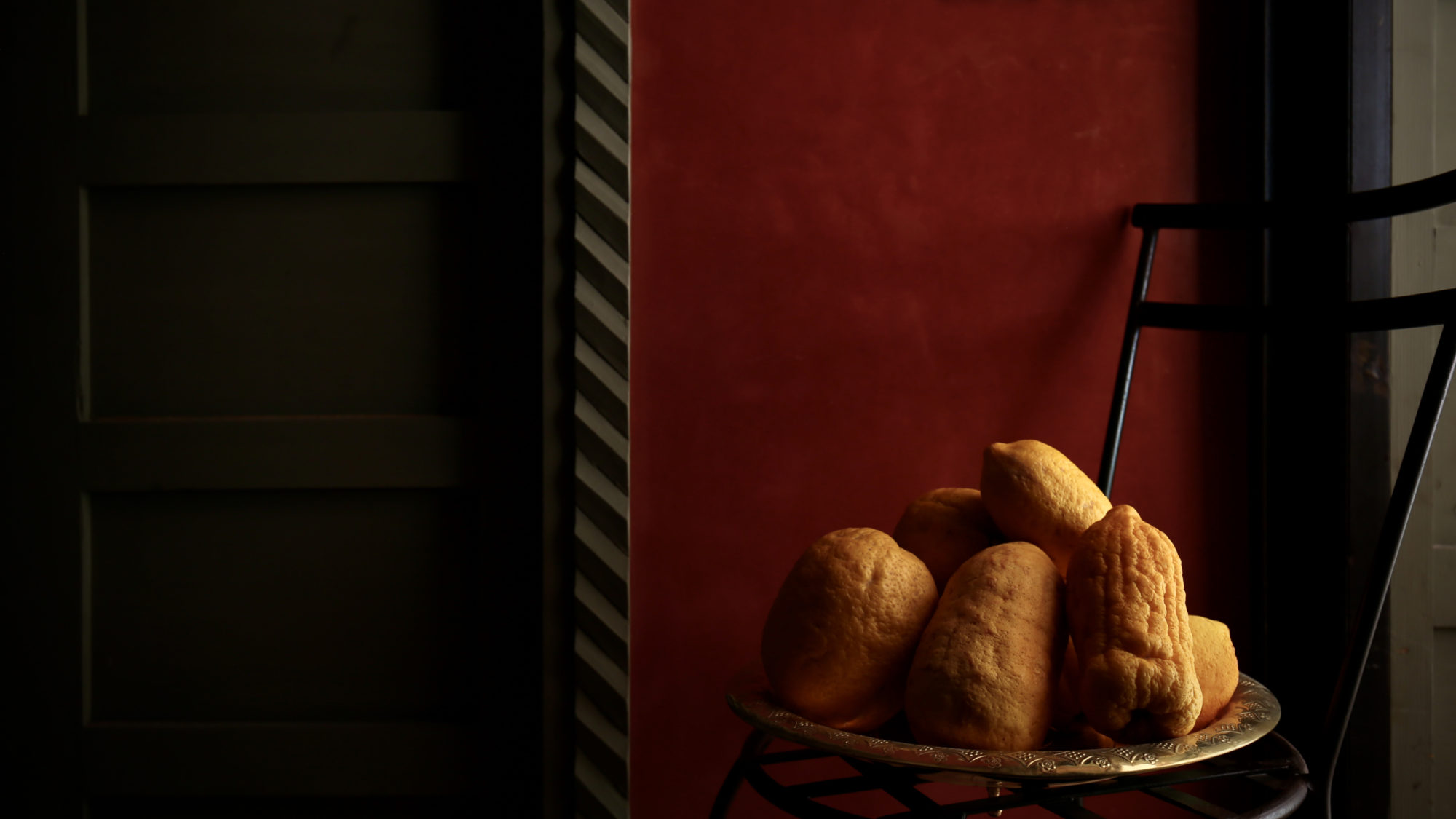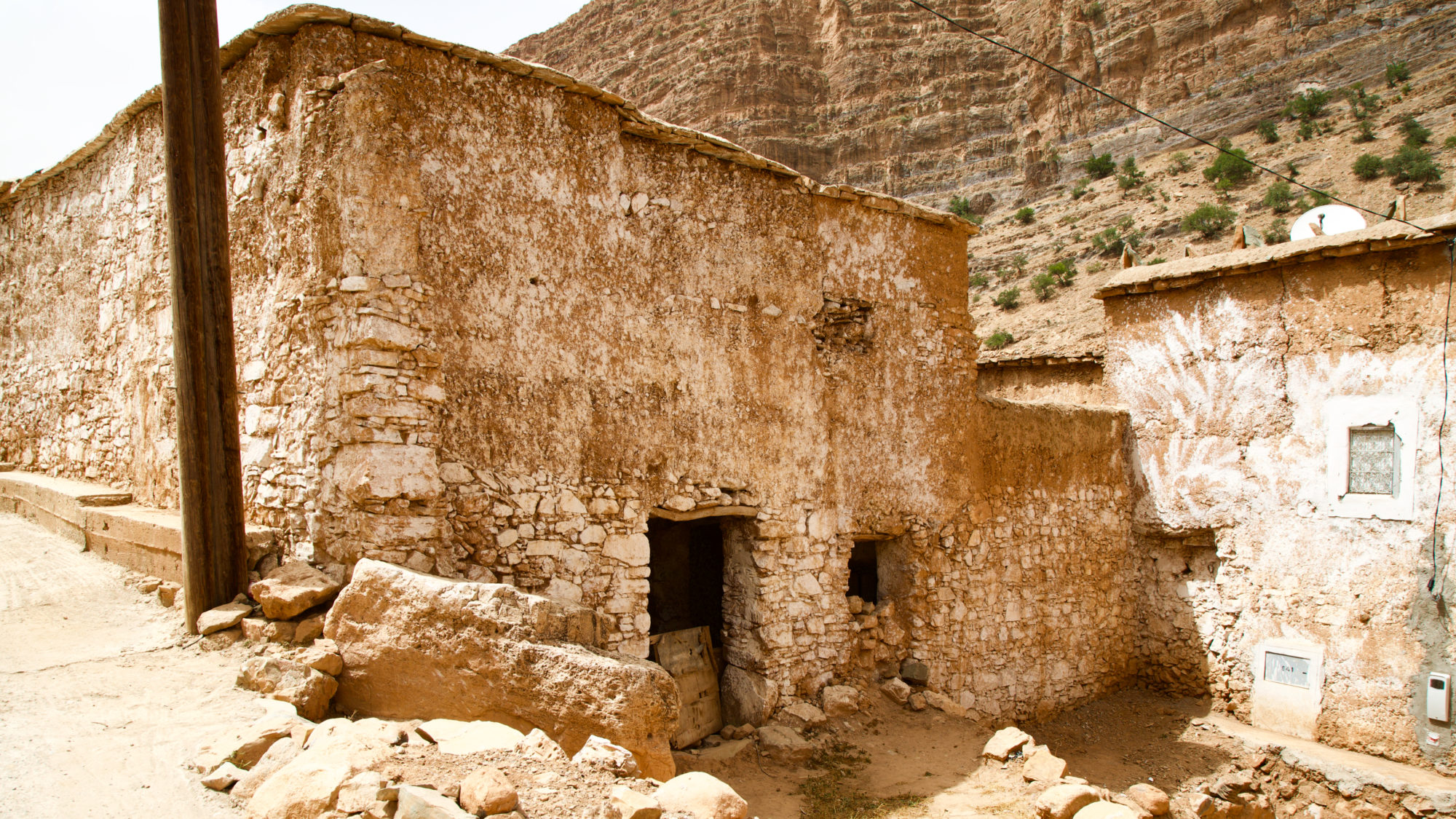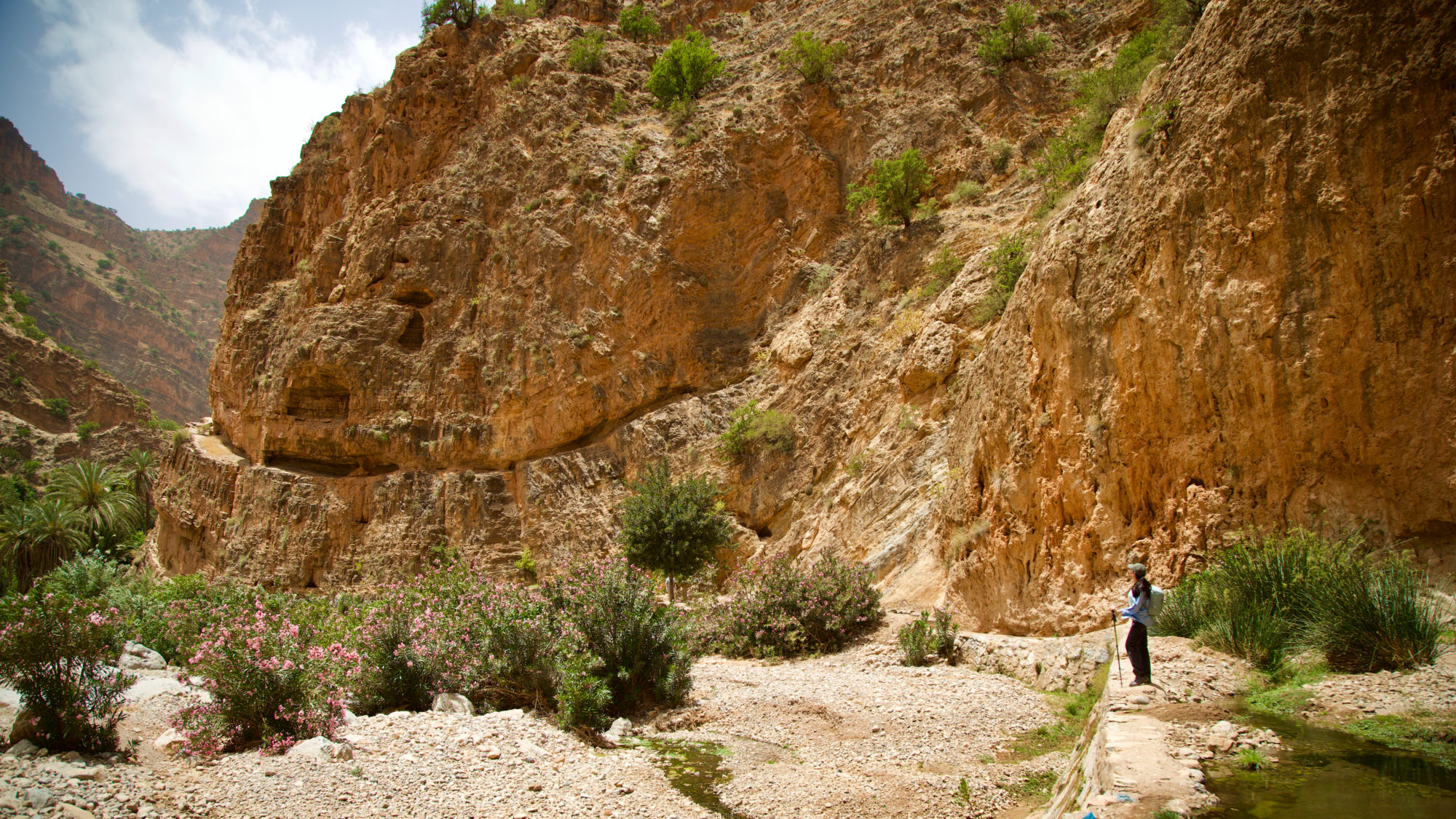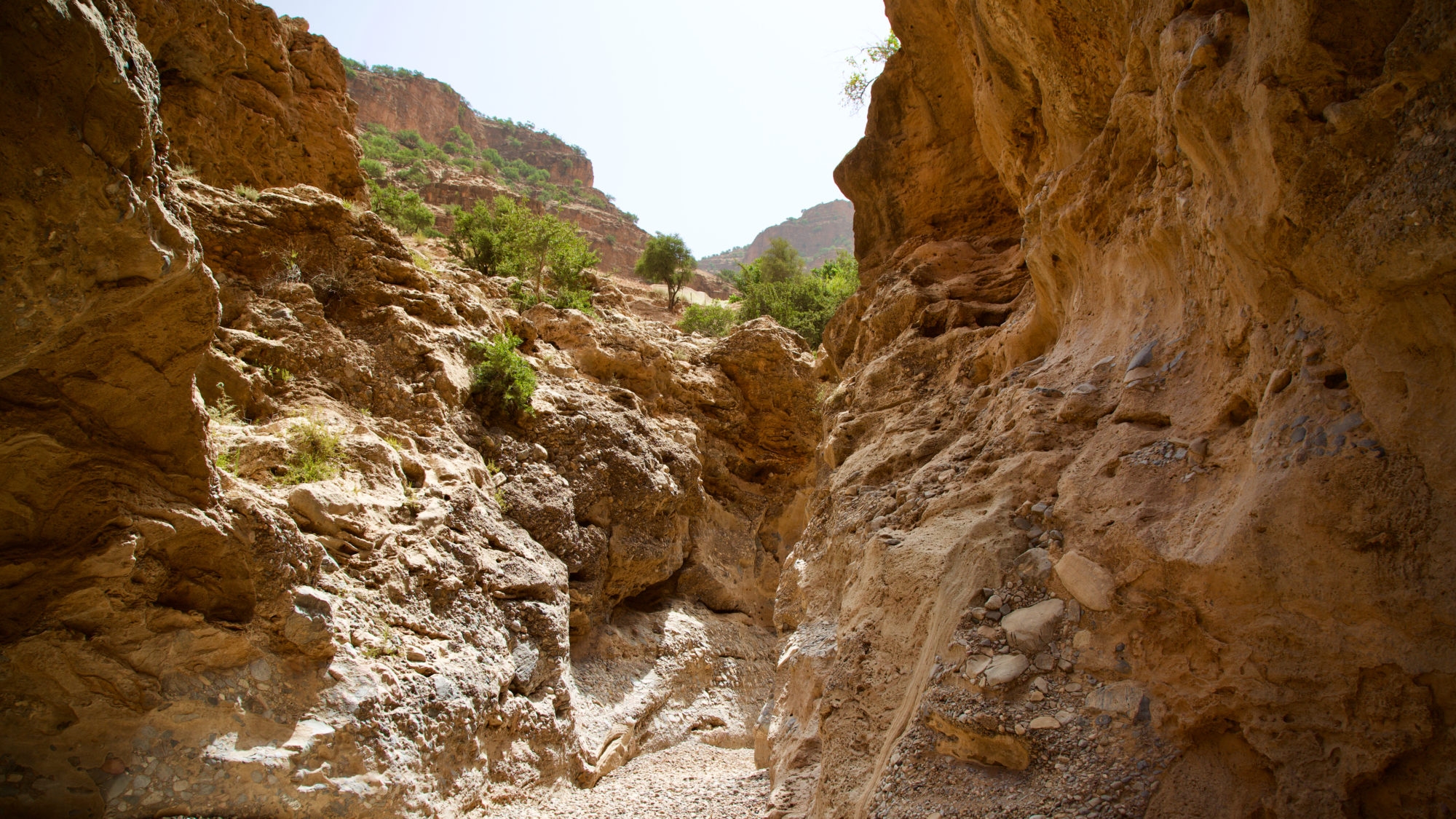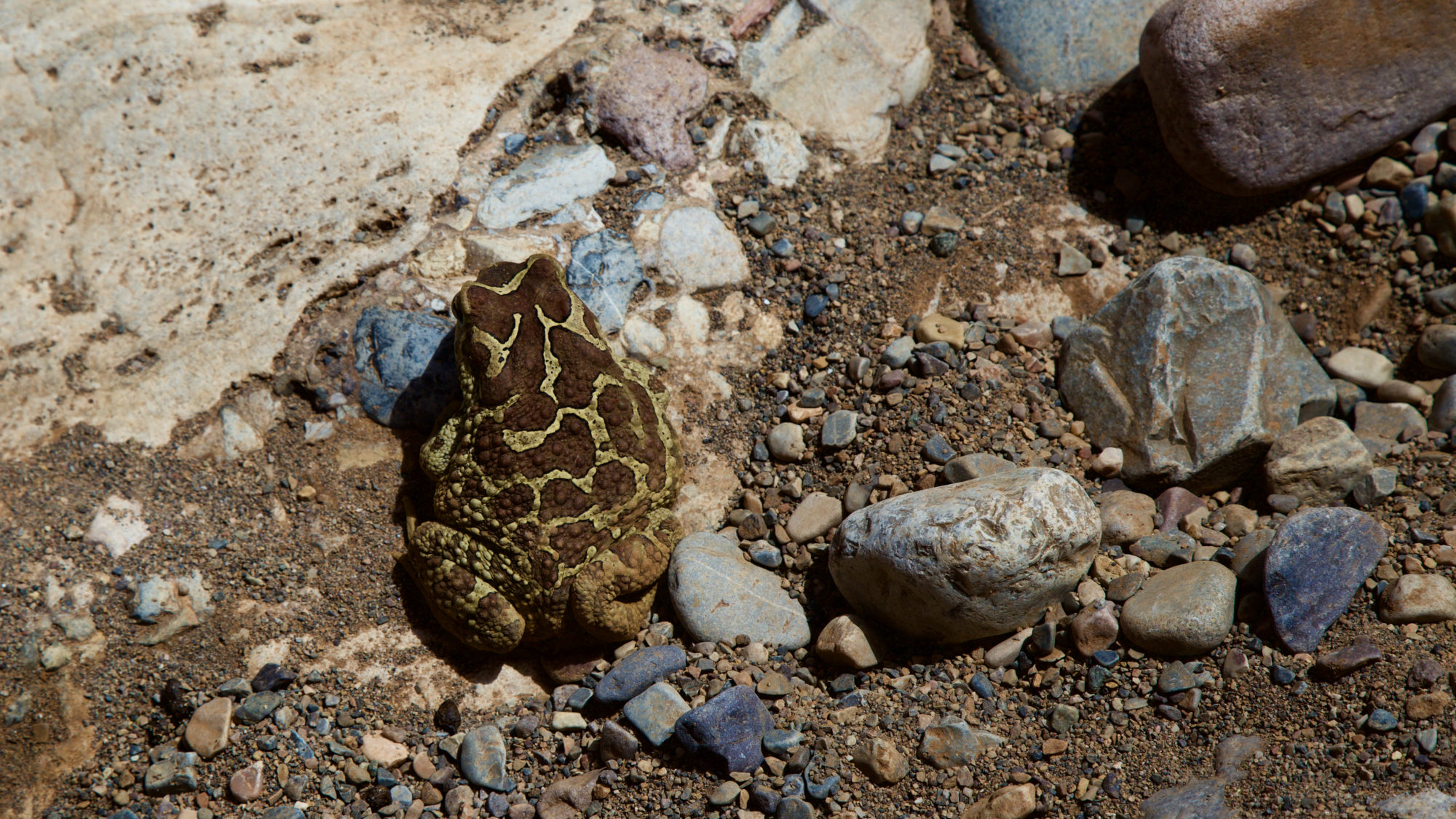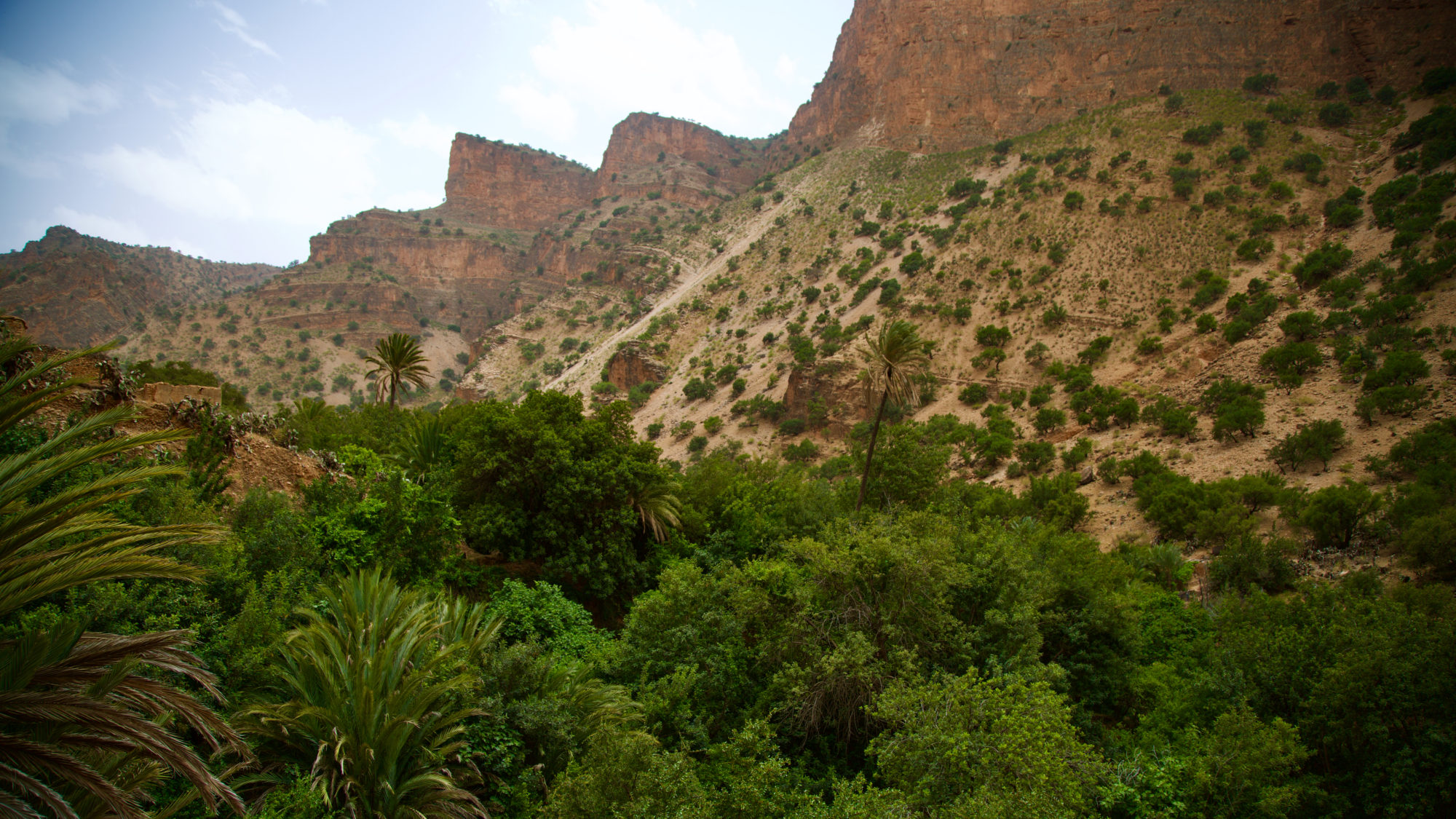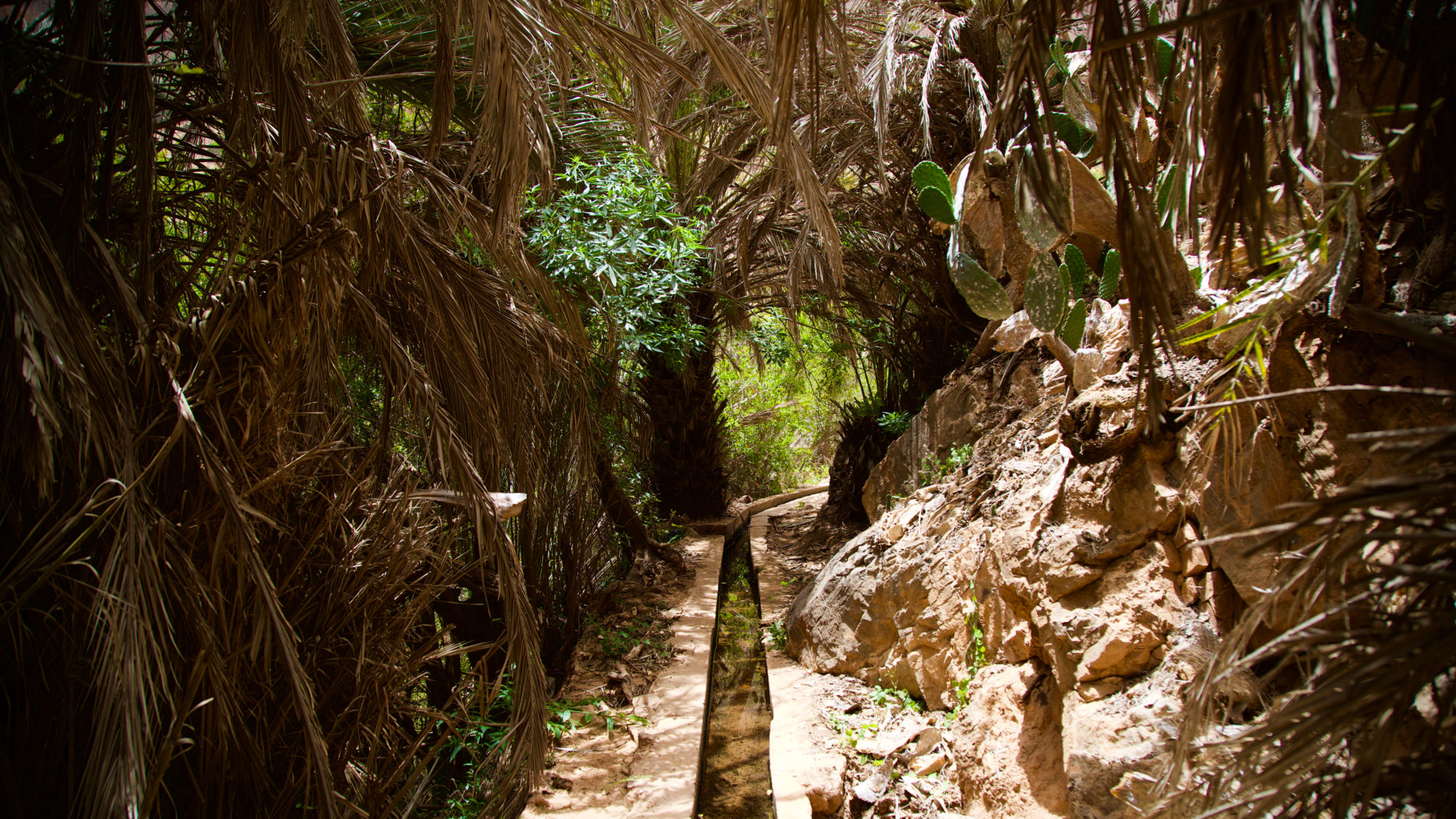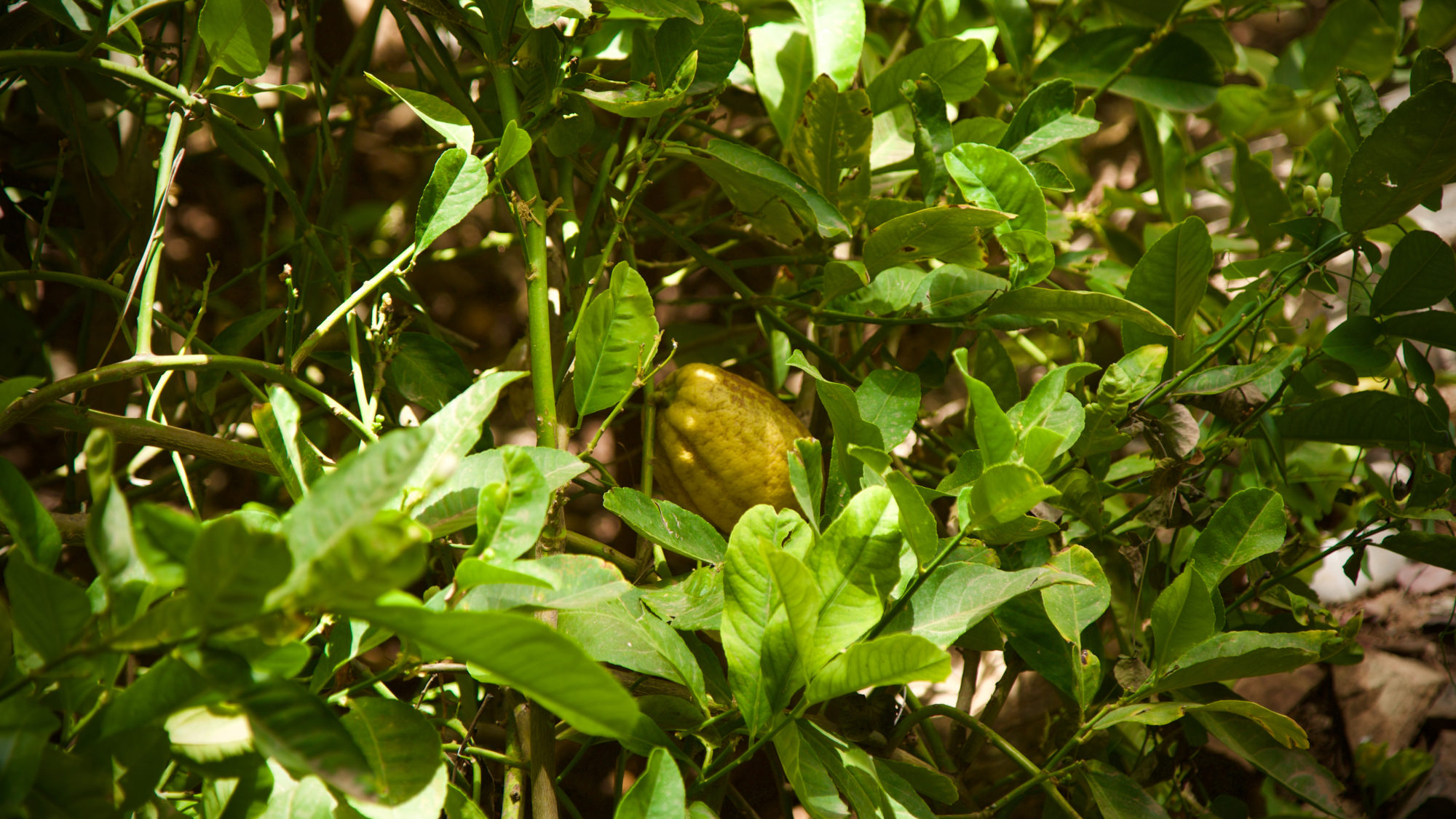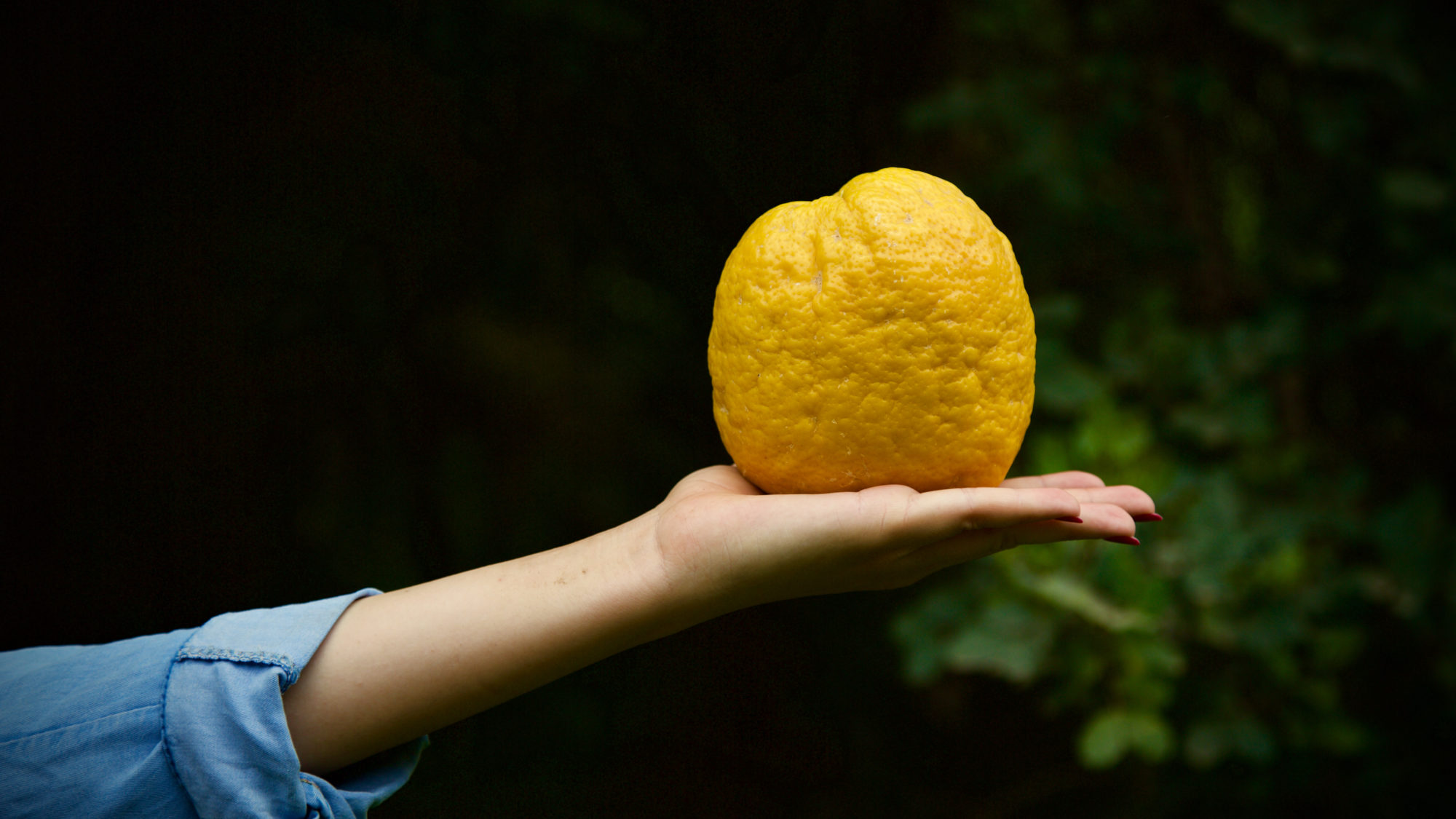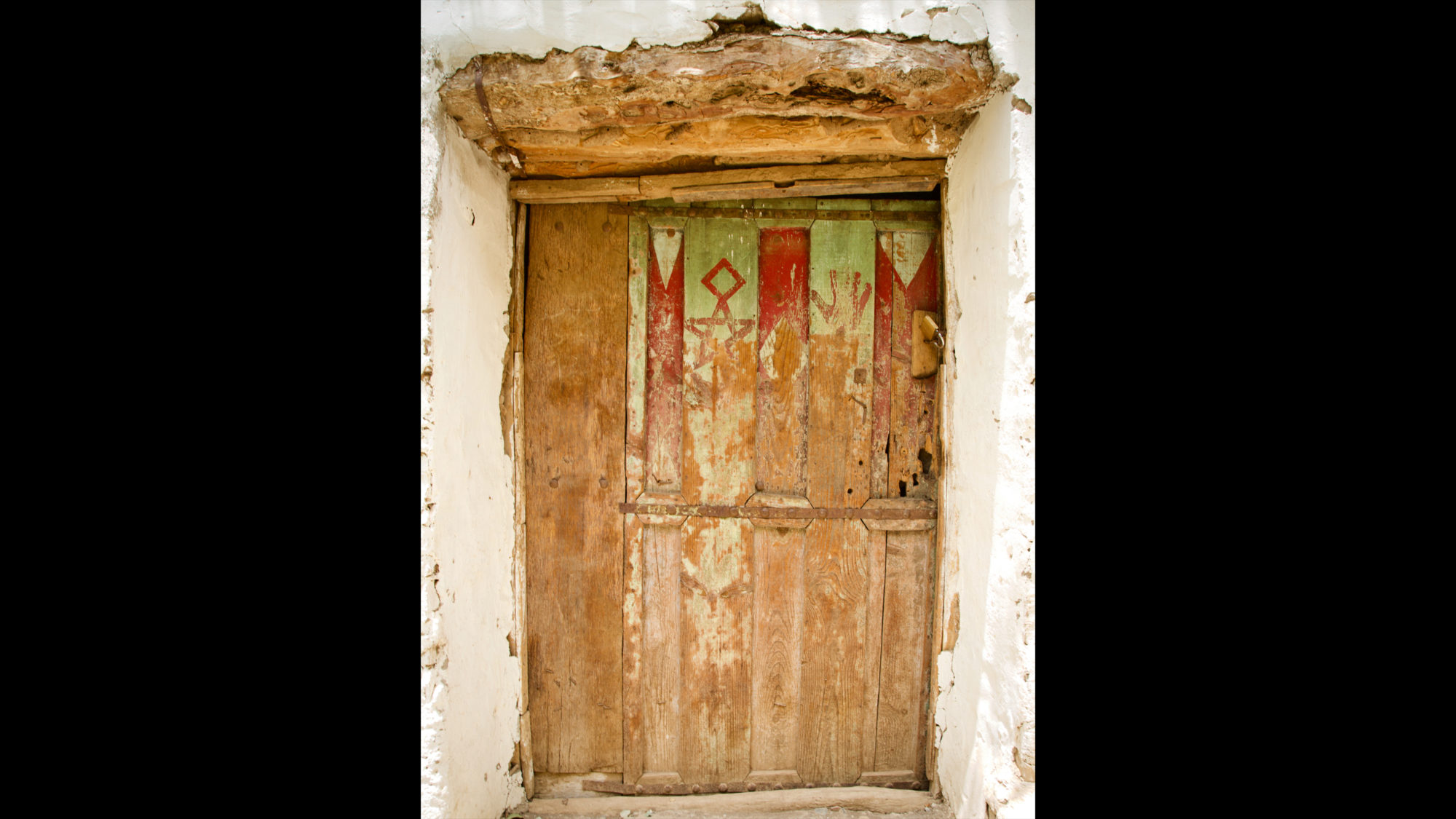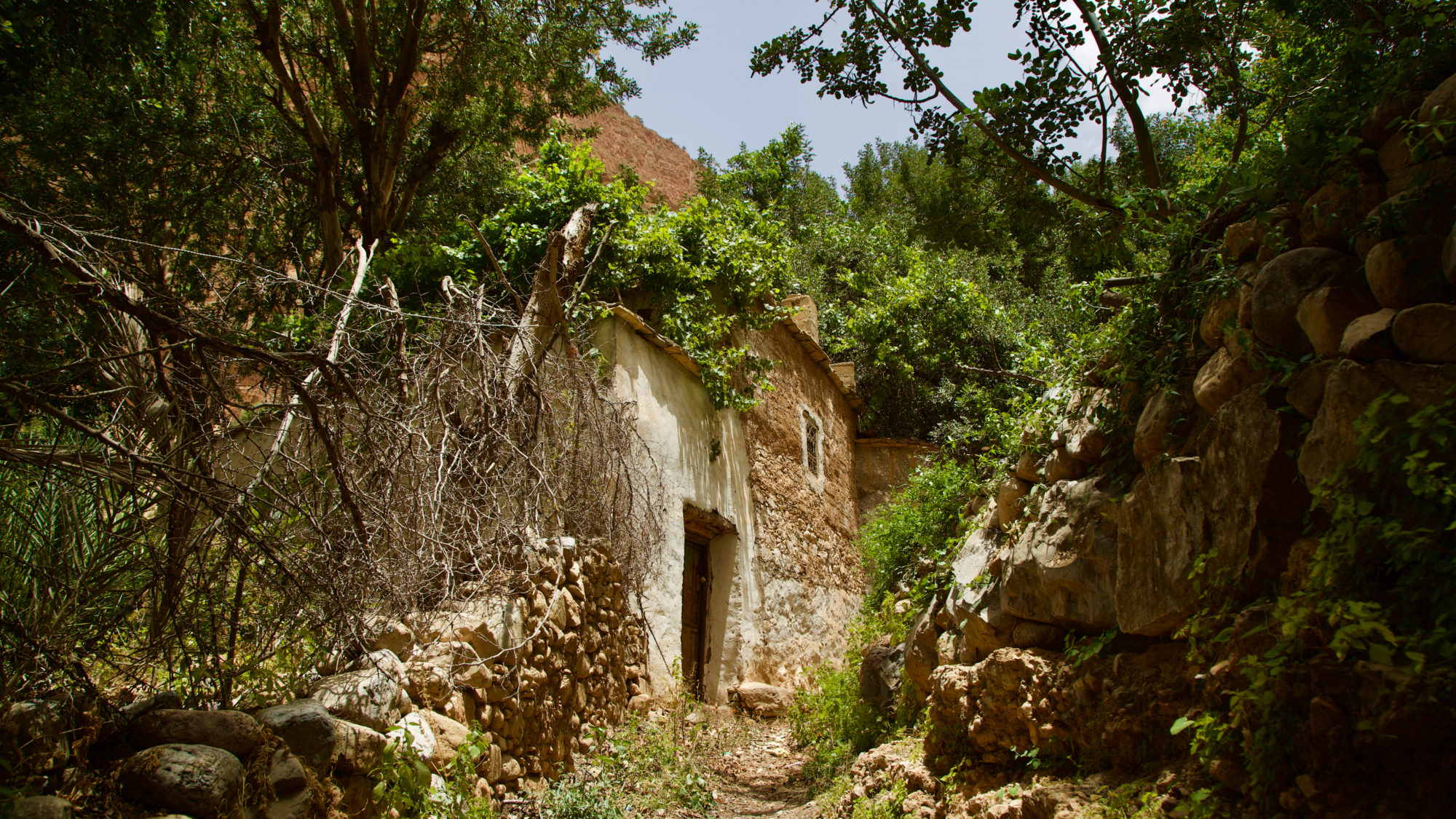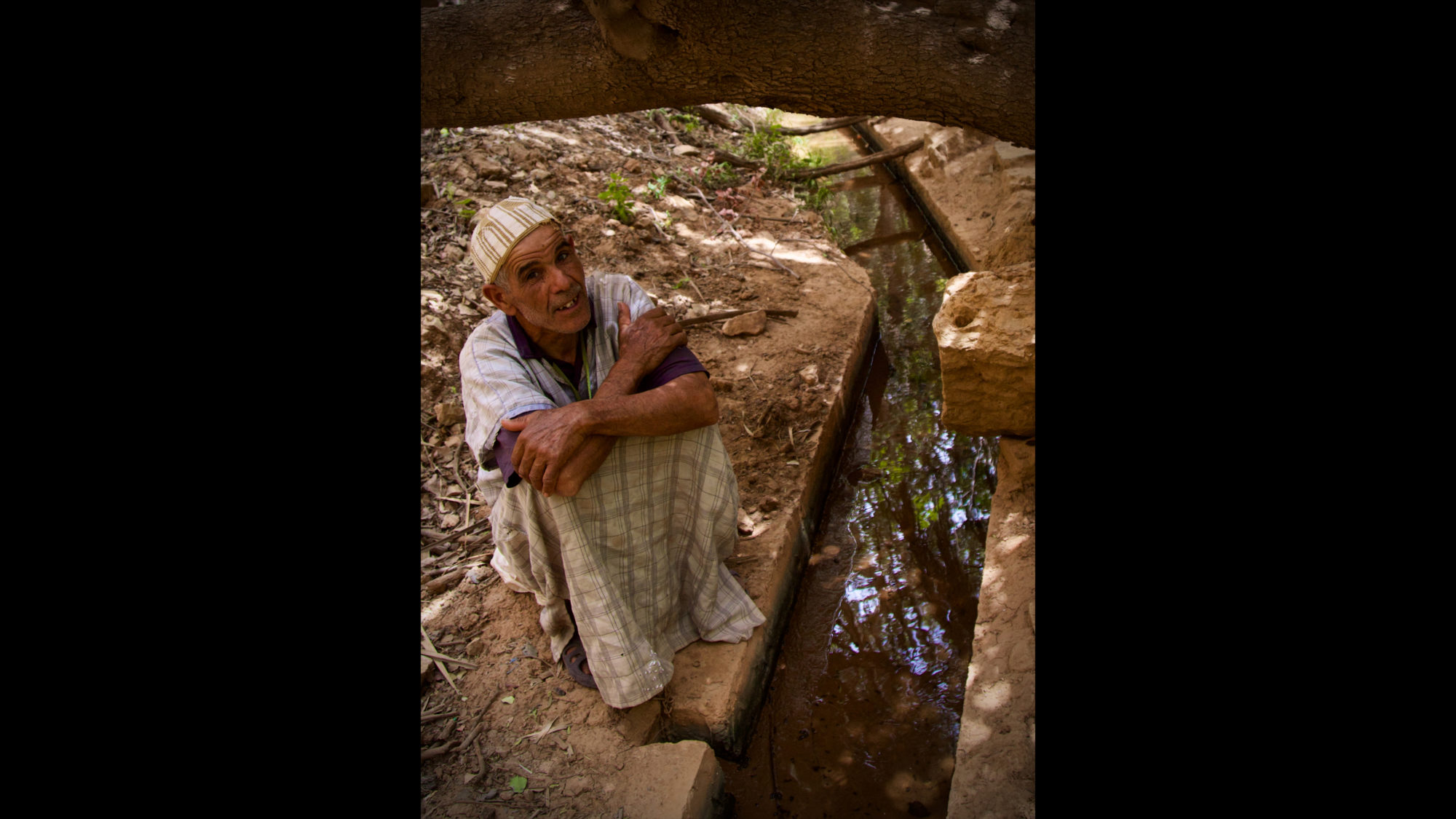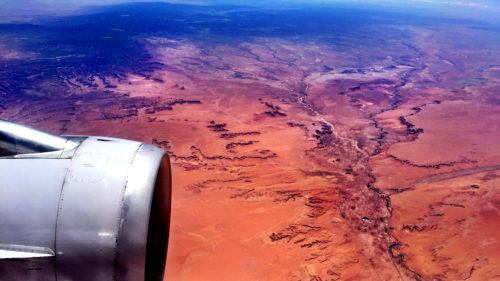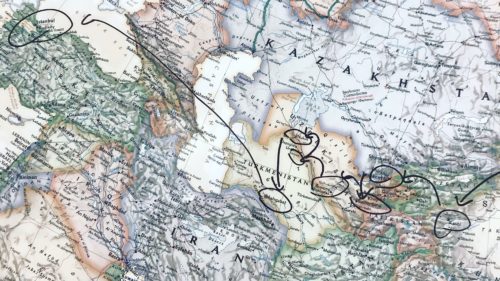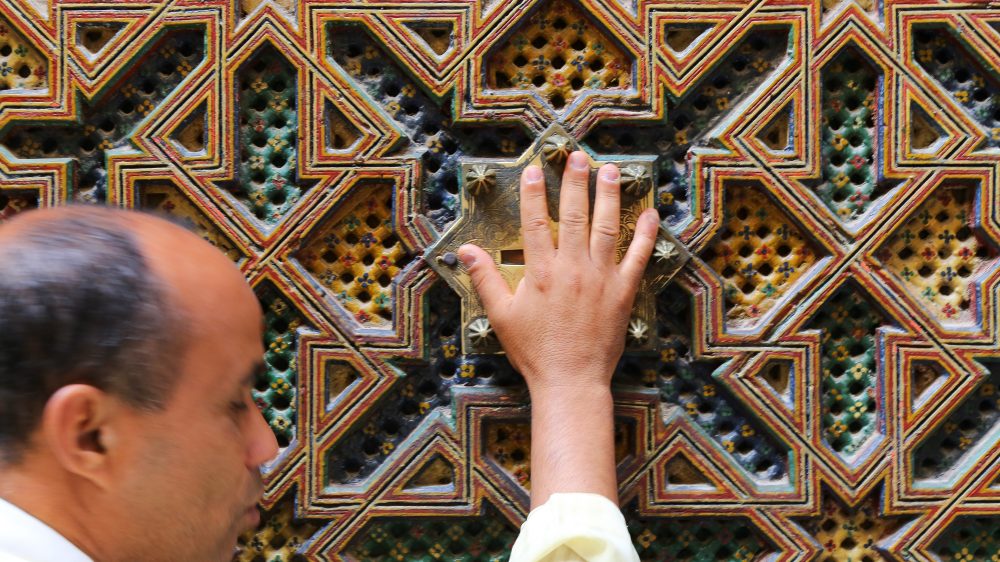In Southern Morocco, Searching for the Orchards where Old Testament Fruit Still Grows
The mercury reads 32º C and the narrow tarmac road is already shimmering at 10.00 in the morning as we drive south from Taroudant. We have only the vaguest idea where we’re going, and without a map or any helpful info from the official Moroccan tourism websites this is a pure shot in the dark.
Spring has quickly passed, turning the wild flowers and fields of green wheat to browned earth and harvests. Argan trees pepper the landscape, with their shiny green berries which will soon begin falling to the ground to be gathered for the region’s famed Argan oil. But today the fields are dotted by labouring Berber women reaping wheat, cloaked in their traditional veils, armed with nothing but hand sickles, in a scene straight out of antiquity.
Pulling into an empty village where we find a local hanout (small grocery store), I step inside to the cool dark interior to ask for a few bottles of mineral water and to see if the owner by some miracle knows the name of a village impossible to pronounce and not found on any of my maps: Tamgnsift.
I’m met with a blank stare. Then I ask where I can find “l’hamd dyal yahood“.
“Ah!, vous cherchez les etrogs.”
He was unaware of the village name I was looking for, but understood perfectly what I was hoping to find. The “lemon of the Jews”, known in Hebrew as etrog, the Corsican citron.
The Jewish presence in Morocco dates back to the Roman destruction of Judea, and tradition relates that the Jews who fled Palestine for Morocco planted their prized lemons in their newly adopted land, among their Berber brethren, centuries before the arrival of Islam.
The etrog is significant because reference is made to it in the Old Testament: “On the first day you shall take the fruit of majestic trees, branches of palm trees, boughs of leafy trees, and willows of the brook; and you shall rejoice before the Lord your God for seven days.” (Leviticus 23:40).
It’s now 11 am, and having precariously crossed three douar (tiny hamlets) over increasingly bumpier tracks, we come to a collection of mud brick homes whitewashed, according to Berber custom. There’s a villager washing his feet by a brook and we ask again about the etrogs. He indicates we can leave our car here, and tells us we’ll need about an hour’s walk into the valley. “I usually do it in half an hour” he remarks, but without a guide the going is much slower. With water in our backpacks, and walking sticks in hand, we wave goodbye to him as he calls back to join him in his house for tea when we return.
At first, the path starts out simply enough, through the packed mud streets of the tiny village, past a few shrouded Berber women who stare at us walking by, before spotting my camera and with a wave of a henna-ed hand pass the loose end of their veils across their faces leaving only the eyes visible. It’s a common gesture in smaller villages in the deep south of Morocco, where taking photos of women, particularly without express permission (which you’re unlikely to get) is a no-no.
We follow a dried out seguia (water canal) for about half an hour until it abruptly ends, forcing us to walk down into the gully, clambering over loose boulders and rocks, deposited there by the sheer force of last season’s flash flood. The parched riverbed has become a nursery for beautiful oleander in full bloom, and we’re serenaded by an endless litany of croaking frogs leaping out of our way and plopping into small algae pools for cover.
We’re starting to think this was all a bad idea (and my wife is questioning my sanity) when all of a sudden the valley opens to reveal slopes bursting with greenery, and some random shouts, of what surely are farmers toiling above us up ahead. I’m slightly nervous and reminded of a scene from that film “The Beach” where the hippy kids, thrilled they’ve found a marijuana plantation, are gunned down by the irate island gangsters. A similar scenario plays through my mind, as I reflect on the stories I’ve heard about the prices these etrogs are reputed to fetch.
And then, natural greenery gives way to carefully organized stone terraces, and a myriad of bushes all expertly pruned and clipped, almost like vines, where we spot our first etrogs, already ripening on their branches.
We’ve found them. A fabled orchard of citrus brought to this specific valley by Jews two millennia ago, and still to this day cultivated by their Muslim Berber neighbours. In a few months time, Israelis and representatives from Jewish congregations from all points of the globe will visit this area to purchase the etrogs to use in the celebration of Sukkot, the Feast of Tabernacles. An etrog grown in this valley and sold to the Israelis or Jewish communities in New York and elsewhere, go for around $50 a kilo, at least ten times the price of normal lemons. Some of the “best” fruit with few imperfections have been known to fetch €1,000 a piece.
I have no plans to become an etrog exporter, but I do love a good story, and our initial frustration and growing exhaustion from the heat (the temperature climbs to eventually reach 40º C, the hottest ever recorded for this time in the year…) gives way to the thrill of discovery, as we picked up farmers’ footpaths, to walk among more etrog orchards, flowering pomegranates, apricot, carob, and apple trees, punctuated by simple mud brick refuges where locals take up their position to protect from thieves their prized orchards.
Heading back to the vehicle, we come across Mohammed, an old villager with the keys to his nearby home around his neck, who had paused next to the seguia for a break, sitting on his haunches to rest and reflect. We speak to him briefly about the etrogs and life in the village before continuing on. A few minutes later, he comes bounding after us (much more vital and spry than his age would lead me to believe) with a small sack that he lays at our feet. “A gift”, he says. On the ground, a half dozen rough-skinned etrogs, glistening yellow in their beautiful imperfection.
As he writes this, Sebastian is currently on a deep dive through Morocco’s Deep South. You can follow his chronicles via Trufflepig’s Instagram. When Sebastian isn’t out risking his marriage and heat-stroke to track down lemons, he’s constantly thinking of ways to show you the Morocco you’ve never heard about. Get in touch with him to get planning your next adventure.
